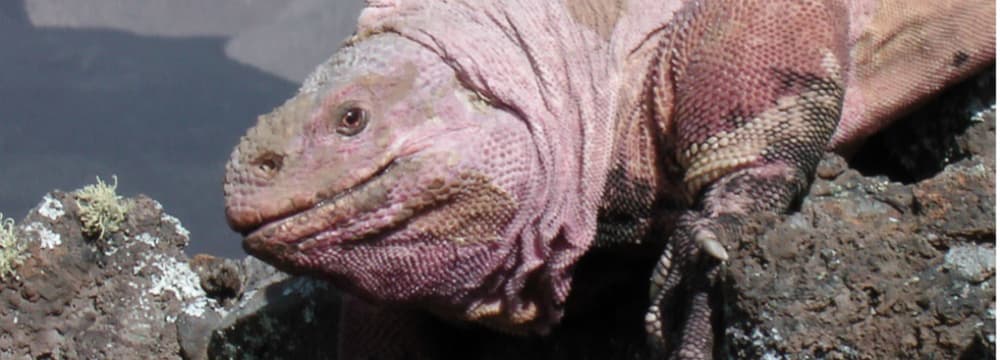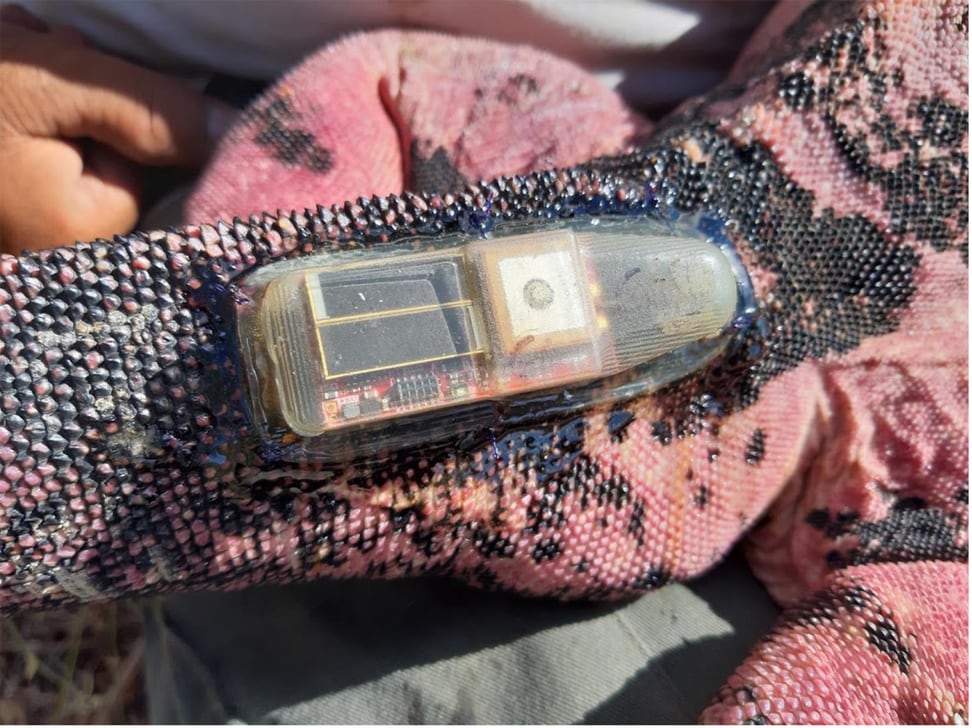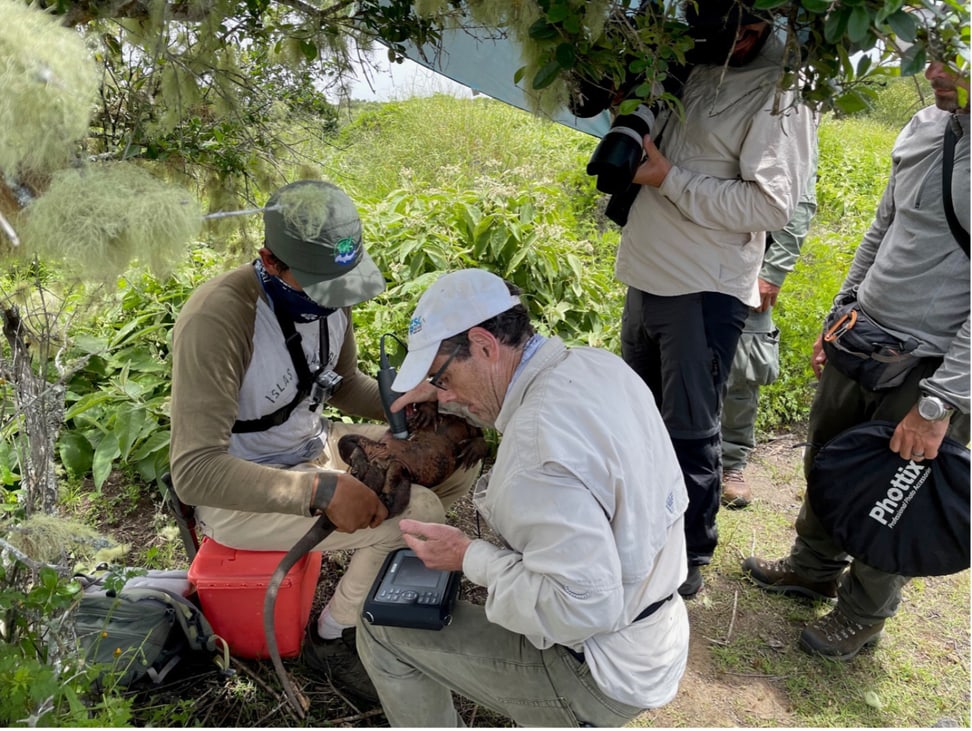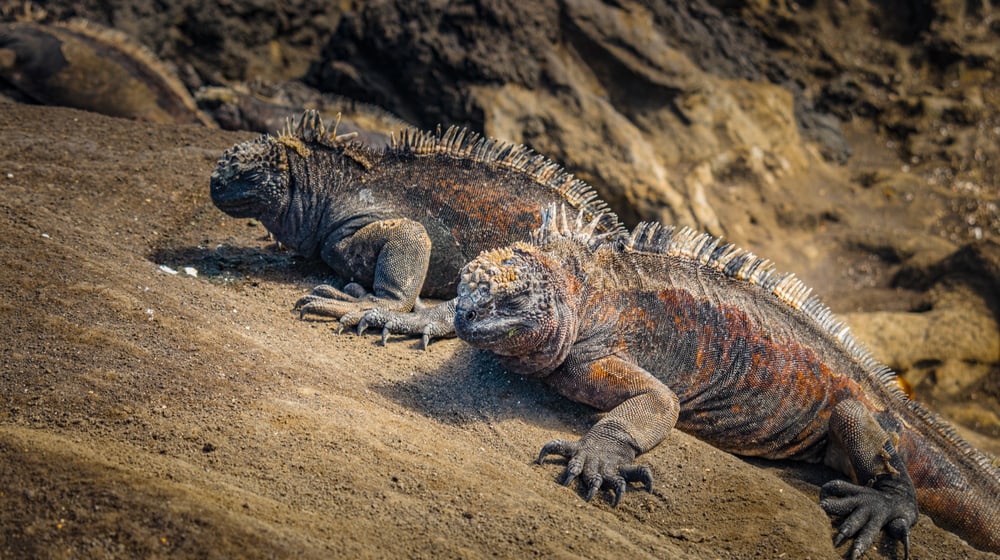
News from the endangered pink land iguana
We all know the yellowish, brown to grey coloured Galápagos land iguanas (Conolophus subcristatus) or also called druse heads. Sooner or later, every visitor to the archipelago encounters these animals, which are a popular photo motif.
In contrast, few have seen the related pink land iguanas (Conolophus marthae) or Rosada druse heads, which live only on the remote slopes of Wolf Volcano on Isabela. The animals are classified as threatened with extinction in the red list of the International Union for Conservation of Nature (IUCN); the IUCN estimates a population of just 192 animals.
Prof. Gabriele Gentile from the University of Rome is intensively studying these extraordinary lizards, whose colour is created by the visible blood vessels in their skin, which is not pigmented in places. Gabriele is trying to create movement patterns of these rare iguanas. In this way, he wants to find out how large the population and territories of the druse heads are, what their social structures look like, where they lay their eggs and what ecological conditions are necessary for the animals.
(Teaser picture: Big male pink land iguana at the rim oft he crater of Volcano Wolf © G. Gentile)

GPS transmitter on the tail root of a female pink iguana © G. Gentile
Expeditions to Volcano Wolf
Two expeditions to Volcan Wolf - in September 2019 and April 2021 - were carried out in cooperation with rangers from the Galápagos National Park Authority (GNPD). 15 adult pink land iguanas were fitted with GPS transmitters. The GPS transmitters were attached under the skin of the animals to prevent the iguanas from losing the GPS transmitters and to enable long-term monitoring. In addition to the total of 30 pink land iguanas, Gabriele was able to fit 5 yellow druse heads with transmitters.
Both species of land iguanas were genetically separated more than 5 million years ago, but live together at Wolf Volcano. Therefore, it is important to learn more about the population sizes and ecological requirements of each species and to find out how the two iguana species share their habitat and whether there is competition between them.
"Green" transmitters"
The transmitters were designed with solar cells or supercapacitors instead of lithium-ion batteries. This should minimize the risk of possible poisoning for the animals. The data is then collected via satellite gateways, which were set up in the iguanas' distribution area during the first expedition. In addition, five weather stations were installed in different areas of the volcano to collect ecological data.

Ultrasound examination of a female iguana © G. Colosimo
Data protection to protect the iguanas
Unfortunately, the clutches are not only threatened by feral cats or rats feeding on the eggs. There is also an illegal market for pink land iguanas! Traders out there are very interested in information because of this. Although the Rosada druse heads are protected
by the Convention on International Trade in Endangered Species of Wild Fauna and Flora (CITES) and the export of the animals is prohibited under Ecuadorian law, unfortunately, wildlife smugglers still try to get wild animals off the Galápagos Islands.
For this reason, Gabriele is not able to publish his research results. Together with the GBPD and the Ecuadorian authorities, he is working on developing sustainable protection measures for the nests or breeding programs
for the rare iguanas. The aim is to increase the population and improve the chances of survival of this enigmatic species.
